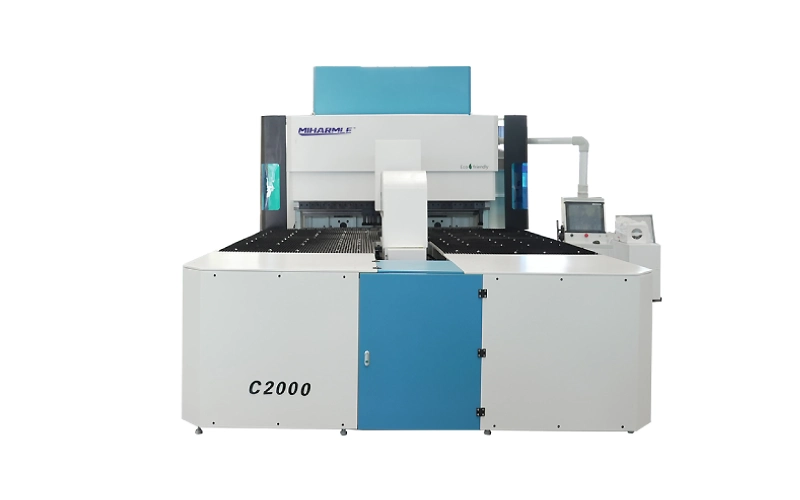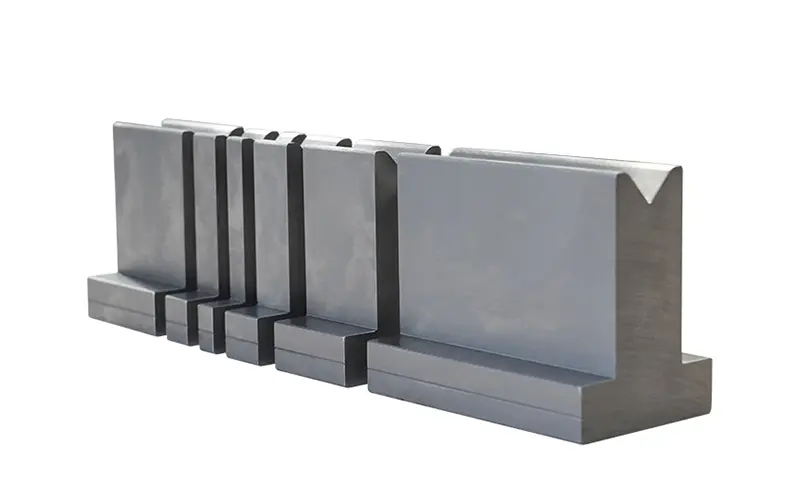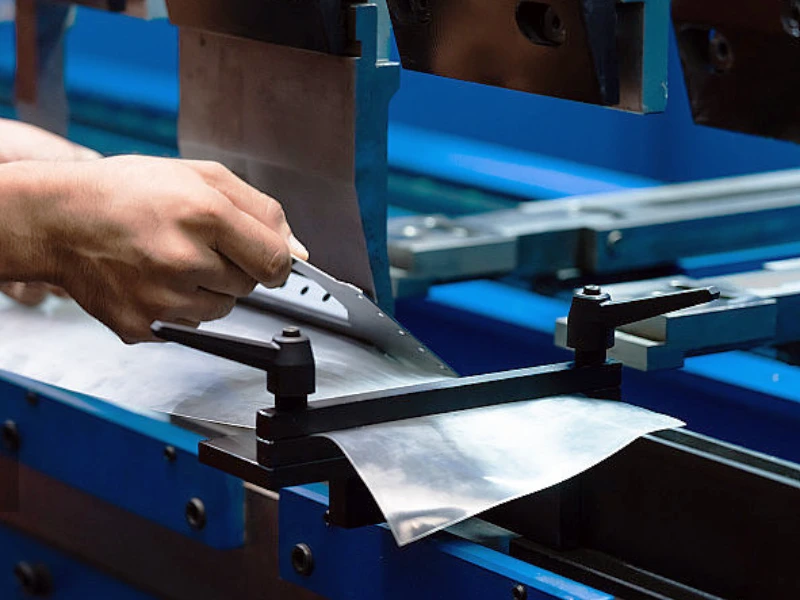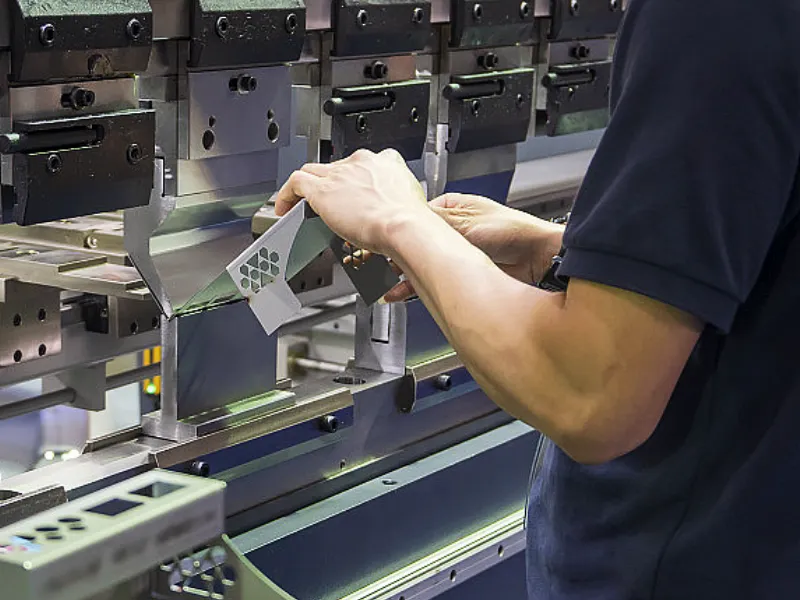Operating a press brake demands exceptional skill from professionals. It requires specific professional abilities. A press brake operator needs to have some professional skills. This includes problem-solving skills, blueprint reading, understanding math, and much more.
The operators operate machines that apply massive pressure to shape and cut metal materials. Their work requires both technical expertise and skilled craftsmanship.
This article will explore the comprehensive nature of press brake operator work. We will specify important skills along with the necessary tools and equipment. So, let’s dive in.
What Are The Responsibilities Of A Press Brake Operator?
A press brake operator shapes metal sheets using machine skills. They help make complex metal parts from simple materials. Their responsibilities include:
Machine Inspection and Calibration
The operator inspects the press brake machine for damage or issues before starting. For each job setup, the operator adjusts the pressure settings and bending angles. They follow the work order specifications.
Operating a Press Brake
The operator must read blueprints and instructions to understand the necessary metal-bending process. The machine operator places metal sheets inside the equipment. The operator changes control settings for making exact bends. The manufacturing process may require multiple bends to complete a single component.
Quality Inspection and Maintenance
After the bending process, the operator verifies the accuracy of the completed parts by measuring them. If there are mistakes, they fix them or adjust the machine. They also keep the machine clean and free of debris.
Machine Maintenance
Operators perform regular maintenance activities, including part lubrication and bolt tightening. These procedures protect the machine from breakdowns while ensuring operational safety.
Record Keeping and Communication
Operators keep records of what they make and any problems or repairs. They also talk with other workers and supervisors to solve issues and keep production running smoothly.
Skills and Qualifications for a Press Brake Operator
Effective press brake operation demands multiple necessary abilities. To become proficient at this work, one must possess these core capabilities along with qualifications:
Technical Skills
Technical skills are an important part of this job. Operators must know how to use a prensa plegadora together with other CNC machines. They should be able to read blueprints and follow instructions. Basic math skills help with measuring and setting up the machine. Some jobs may ask for experience with other metalworking tools.
Attention to Detail
This job needs careful work. The operator needs to inspect all bends and cuts to verify they match the original blueprint. The prevention of both production errors and material waste depends on detailed attention to work. The precision required in this job is essential to prevent part failure from minor errors.
Physical Ability
Operators at press brakes normally spend multiple hours standing during their shifts. Heavy metal sheet handling might be necessary for this role. High strength and good hand-eye coordination help operators handle materials safely.
Safety Awareness
Operating heavy machines exposes operators to possible safety hazards. They must adhere to safety rules during all their work hours and be vigilant during operations. Workplace safety equipment combined with clean operating areas minimizes accidents at work. The operator must never leave their assigned workplace areas.
Problem-Solving Skills
Metal and machine components sometimes experience operational problems. Detecting operational problems must be followed immediately by solution development. This procedure helps maintain operational flow and minimizes wasteful spending.
Tools and Techniques Used
Press brake operators utilize various machines, tools, and software systems in their operations. They apply their skills to produce precise metal component shapes. Operators employ basic tools combined with techniques for their work, as discussed in the following section.
Types of Press Brake Machines
Hydraulic Press Brakes: This equipment utilizes fluid pressure to perform metal bending operations. High strength and precision enable it to work well with challenging materials.
Mechanical Press Brakes: These use a flywheel and clutch system. They work fast and are great for high-volume jobs, but are less flexible than hydraulic types.
CNC Press Brakes: The CNC Press Brake system operates as a computer-controlled machine. These machines deliver the most precise results while processing complex bending shapes. The CNC brake technology provides both efficient production and waste reduction, yet it requires experienced operators to operate it properly.
Prensa plegadora herramientas
V-Die: The V-shaped lower die enables precise bends in metal sheets.
Gooseneck Punch: This upper tool’s design features a curved shape. It enables precise bending of materials through restricted areas or when creating customized forms.
Custom Dies: Specialized dies are used to manufacture unique or complicated bending applications.
Other Dies: U-dies for wide bends, Z-dies for complex profiles, and straight punches for standard bends.
Measuring Tools
Calipers: They determine both the thickness and length of metal parts.
Angle Gauges: These verify the design accuracy of each bent shape. It is done by checking the angular alignment.
Tape Measures: These function as size and placement measurement tools for quick checks.
Laser Angle Gauges: These modern laser instruments perform accurate angle measurements through laser technology. Modern shops commonly utilize these devices.
Software and Programming
CAD/CAM Software: Users can design components and develop bend plans through CAD/CAM software which includes Delem, LVD and Bystronic. The software system produces digital products which transform into physical objects.
3D Simulation: The system creates virtual three-dimensional visualizations of bending operations. You can detect errors through this system before starting the machine operation.
Offline Programming: Operators use Offline Programming software to develop bend programs on computers for subsequent testing. This process saves machine time and decreases the number of errors.
Press brake operators produce exact, high-quality parts by applying these tools and techniques to their work. Software integration with the mentioned machines produces exact bending results. Combining these elements results in safe work procedures and efficient operation.
Is It Difficult to Become a Press Brake Operator?
To qualify as a press brake operator, fundamental training combined with practical work experience is required. Most available positions require applicants to hold a high school diploma or a similar qualification.
Three main pathways exist to become a press brake operator. It may be a short technical school course, on-the-job training, or apprenticeships. A basic requirement for working as a press brake operator includes comfort with handling machines. You should maintain focus while strictly following established safety regulations. You learn mostly from experienced operators. So, entry-level positions do not require a college education.
Average Salary and Job Prospects for Press Brake Operators
The annual salary for American press brake operators currently stands at $36,000. This breaks down to an hourly rate of $20.93. Press brake operators who work in particular areas can earn more than $45,000 annually after accumulating experience. Operating brake systems in Rhode Island, New Hampshire, and Wisconsin provide higher compensation to workers.
Work opportunities remain steady while the number of open positions decreases. Machines have become more advanced which causes them to perform tasks that were previously done by humans. The manufacturing industry together with automotive and metalworking sectors welcome new operators at all times. Manufacturers continuously seek qualified personnel for their operations. Additional training and certifications lead operators toward higher-paying positions as well as managerial advancement.
Conclusión
The operation of press brakes requires skilled personnel who transform flat metal into accurate components utilized by various manufacturing sectors. The main duties of press brake operators include machine setup and operation alongside blueprint reading, quality inspection, and safety maintenance of equipment for efficiency purposes. A press brake operator requires technical expertise, concentrated attention to detail, and the ability to work with others. Press brake operators utilize their precise control and keen observation to create the metal components that form everyday products. Their work activities maintain factory operations and standard compliance with metal parts.










